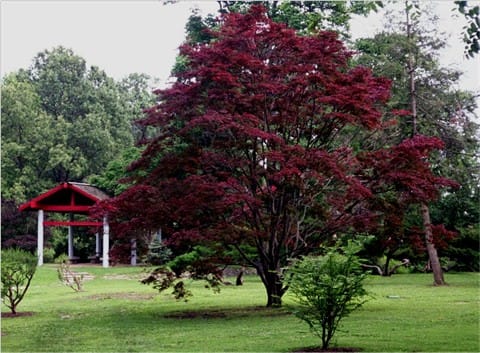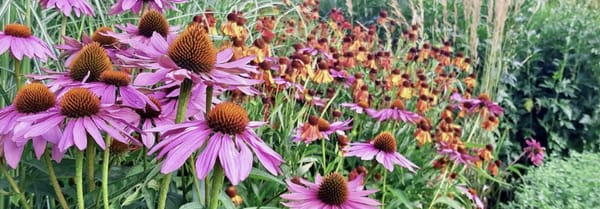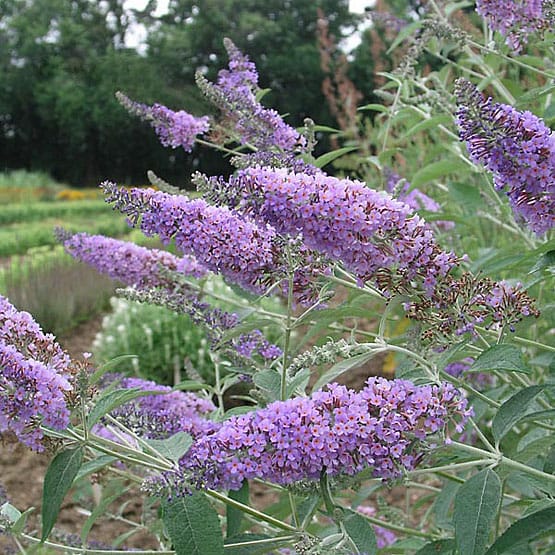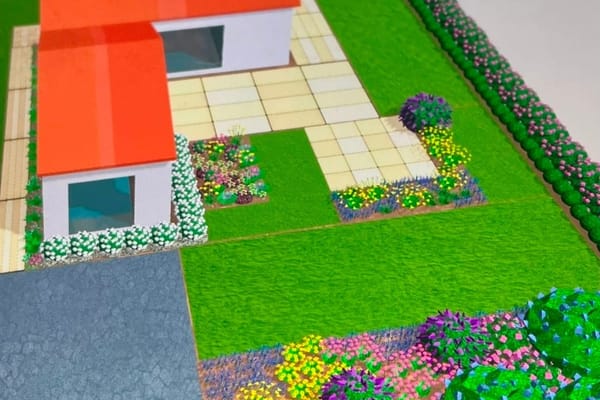The Art of Planting Design: Not just another pretty face

"My garden is my most beautiful masterpiece" ......Claude Monet
A question I frequently hear is, “What plants go well together?” or “I have a Magnolia tree—what should I plant with it?” While it might seem simple enough to stroll through a garden center and choose whatever looks appealing, true planting design goes far beyond aesthetics. It's not just about beauty—it’s about harmony, purpose, and a thoughtful blend of science and artistry.
Planting design is a multilevel process, where aesthetics meet ecology, and creativity is tempered by climate, soil, and site conditions. At its core, planting design is about creating experiences—whether that’s a tranquil retreat, a formal display, or a vibrant burst of seasonal color. It can follow the structure and mood of a specific garden style, such as an English cottage garden, an Italian courtyard, or a minimalist Japanese garden. While many of these gardens may share common plant types, how those plants are arranged, maintained, and experienced makes each garden style unique.
Style with Substance
When planning a garden, one of the first considerations should be its stylistic direction. Do you want the refined symmetry of a French parterre? The loose, romantic chaos of an English garden? Or perhaps the serene, meditative quality of a Japanese landscape?
Each style comes with its own palette of plants, spatial composition, and cultural context. For example, an Italian garden may feature Mediterranean plants like lavender, Italian cypress, olive trees, and sunflowers—all suited for hot, dry climates. However, even within one style, individual gardens can vary greatly. One might feature terraced stonework and sculpted hedges, while another leans towards rustic pergolas and fragrant herbs.
Regardless of the style, successful planting begins with knowing your site. My father, who was in the landscape industry, believed that planting design is 20% science and 80% art—but that 20% is essential. Without it, even the most inspired idea may fail to thrive.
The Science: Site Analysis
Before selecting plants or determining style, a detailed site analysis is vital. This includes understanding:
- Sun exposure: Is the area full sun, partial shade, or deep shade?
- Soil type and pH: Sandy, loamy, or clay? Acidic or alkaline?
- Drainage: Does water collect in certain spots?
- Hardiness zone: What are the lowest temperatures your plants must survive?
Only once these factors are clearly defined can you start to make informed decisions about what plants will not just survive, but thrive.
A Case Study: Designing Around a Japanese Maple
Recently, I was asked to design a garden centered around a cherished Japanese Maple. Before diving into the design, I had to answer some key questions. Was it a sunny or shady location? Did the area have good drainage? What was the soil like? What USDA Hardiness Zone were we working in?
Once those basics were clear, I began researching appropriate companion plants—those that would complement the Japanese Maple’s form, color, and cultural resonance, as well as thrive under the same conditions.
Companion Plants for Japanese Maple
Japanese Maples (Acer palmatum) are elegant, often slow-growing trees known for their stunning foliage and architectural branching. They prefer dappled light, rich well-drained soil, and consistent moisture. USDA zone: 5-9. Here are a few of my favorite hardy companion plants that work beautifully with Japanese Maples, both aesthetically and horticulturally:
Shrubs
Azaleas & Rhododendrons – Prefer similar soil and light conditions; provide spring blooms. USDA zone: Azalea 6-9/Rhododendrons 4-9
Hydrangeas – Add seasonal interest with large blooms and foliage contrast. USDAzone:3-9
Camellias – Offer evergreen structure and stunning winter/spring flowers. USDA zone: 6-9
Pieris japonica – Evergreen with cascading white or pink flowers in early spring. USDA zone: 3-9
Perennials
Hosta – Great for shade; offer bold foliage contrast. USDA zone: 3-9
Ferns (e.g., Japanese painted fern) – Add texture and thrive in shady, moist conditions. USDA zone: 4-8
Heuchera (Coral Bells) – Colorful foliage that pairs well under or near maples. USDA zone: 4-9
Astilbe – Feathery plumes and tolerant of shade and moisture. USDA zone: 3-8
Groundcovers
Moss – Ideal for Japanese-style gardens. USDA zone: 6a-10b
Liriope (Lilyturf) – Hardy, low-maintenance, and blooms in late summer. USDA zone: 4-10
Sweet Woodruff – Shade-loving with fragrant white flowers in spring. USDA zone: 4-9
Pachysandra – Evergreen groundcover that thrives in shade. USDA zone: 3-9
Conclusion
Once the style and the plant palette are defined, the final step is layout. Begin with the existing conditions: walkways, patios, slopes, water features, or trees that will remain. Then use the principles of design—balance, rhythm, scale, unity, and contrast—to create a thoughtful arrangement of plants.
For a Japanese-inspired design, asymmetry and negative space are just as important as plant choice. Avoid overcrowding; instead, allow each element to breathe and stand out. Use rocks, water, and simple groundcover to frame key specimens like the Japanese Maple.
Sketching or using digital tools, such as the Flourish Garden App, can help you visualize spacing and layering. Start with structural elements—trees and large shrubs—then add mid-size plants and finally groundcovers and accents.
Planting design is about crafting a story, a mood, an environment. It's not just throwing together plants that look nice at the garden center, but rather weaving them into a composition that is both beautiful and sustainable. Whether you're designing around a Japanese Maple, a Magnolia, or a simple flower bed, take the time to study the site, understand your chosen style, and select plants that belong—both to each other and to the space.
By blending a little science with a lot of soul, you’ll create a garden that not only grows, but becomes a place you can enjoy and call your own.





